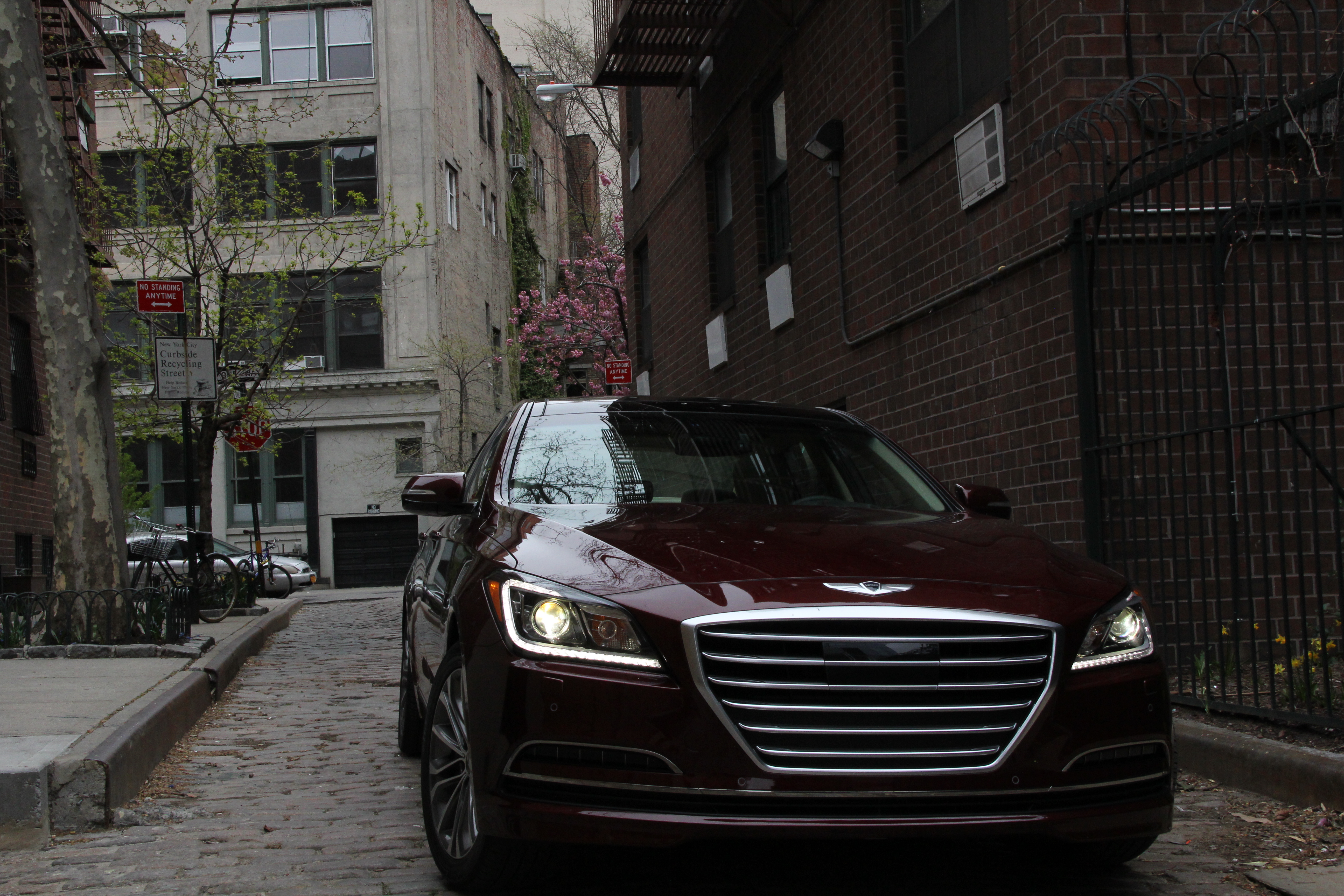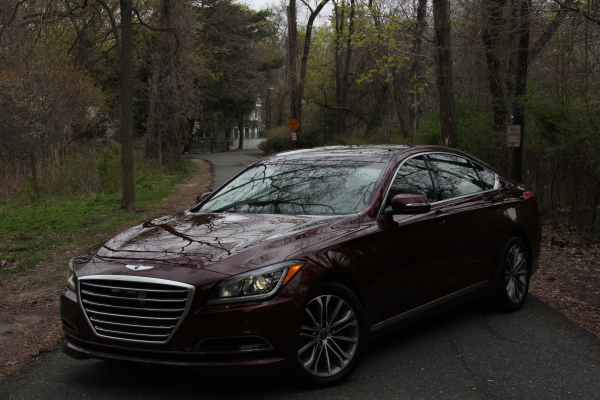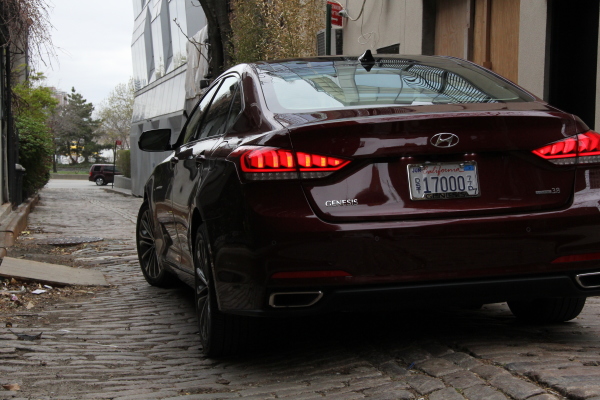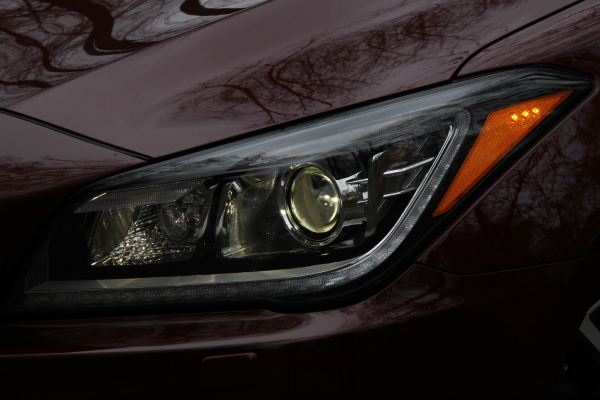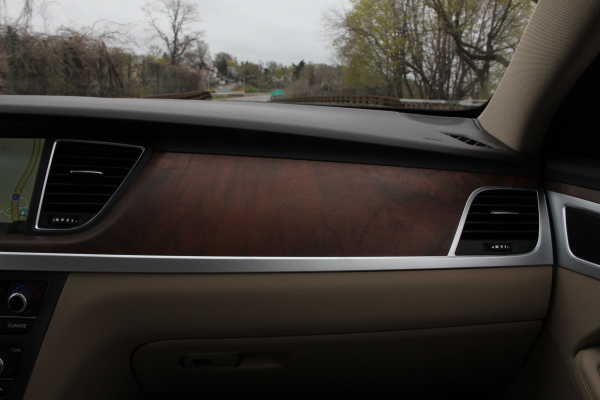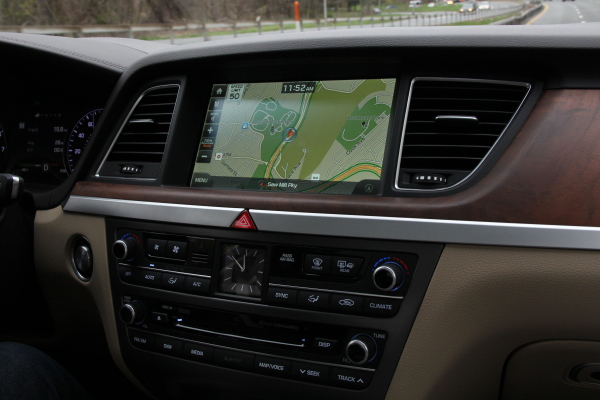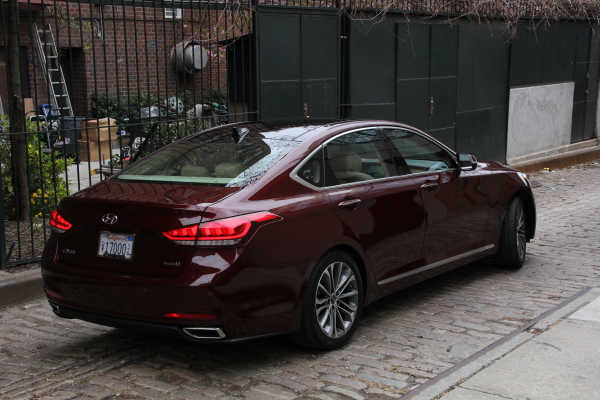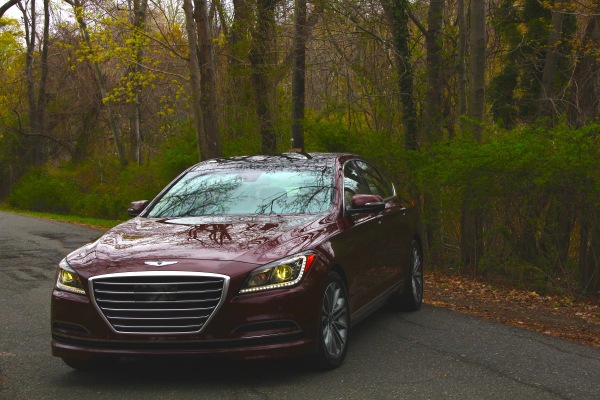
It seems in today’s branding driven, up-market world the word luxury is everywhere. Where once reserved for the elite and oligarchs of society, it now seems “luxury” can be found everywhere from the home goods stores to the supermarket. One then wonders when did luxury undergo this drastic change? When the lifestyles of the rich and the famous get a facelift? Maybe it has never been about seemingly unattainable exclusivity at all; maybe it has always been about high quality and the hope of inclusiveness. The queen of luxury, Coco Chanel, once said it best, “Some people think luxury is the opposite of poverty. It is not. It is the opposite of vulgarity”. Maybe she was on to something. Luxury seems more than anything to be a state of mind. An equal parts mix of quality, branding, confidence and a “je ne sais quoi” that we will hopefully know when we see.
There is something to be said for the luxury of being comfortable in your own skin. I think it is in this thought that the Hyundai Genesis finds it roots. Back in 2008 when the Korean automaker introduced this vehicle to the public at the New York International Auto Show, it was met with some very mixed reviews. While this new combatant in an otherwise old-guard dominated field intrigued some, others simply dismissed this as another that will fail where many have failed before. Either way, Hyundai was clear about a couple of simple facts. Firstly, this vehicle was intended to be the first of many, thus the name of the vehicle: Genesis. Secondly, Hyundai made a very conscience to approach this new market differently than their Asian counterparts. Fellow Asian manufacturers like Honda, Nissan and Toyota had all created secondary brands to retail luxury vehicles in North America and Europe, based on the strong research that these markets could not be convinced to spend “luxury money” on Asian brands that had made their mark as economy producers. Hyundai decided that they very well could be both. They would continue to produce high quality economy vehicles at the bottom of their line up, but they could bring strong offerings to up-market consumers as well. This new rear-wheel drive sport sedan was going to be their first attempt at proving that point.
I suppose the rest of that story is somewhat history. In the last 6 years Hyundai’s numbers have been growing in leaps and bounds and their gamble that American would give a chance to a true competitor was rewarded with huge sales numbers, driven primarily by sales of their Genesis. Now after 6 long years and a couple smaller facelifts, it seems that the Genesis is no longer just starting out and is ready for the next iteration. Welcome the 2015 Hyundai Genesis.
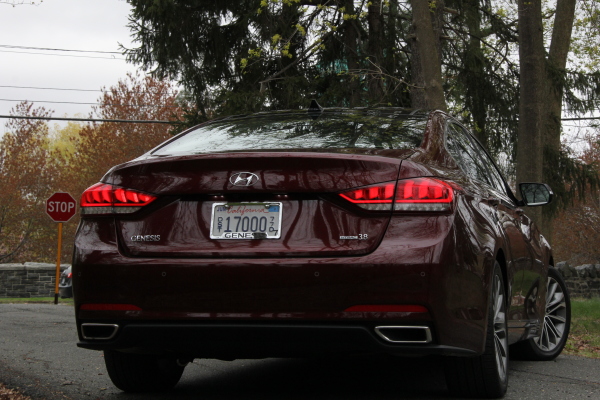
Most notably, you can see that the bodylines are far more aggressive than it’s last generation counterpart. While the last gen seems a lot more concerned with the luxury component, this model seems to have clearly remembered the sport component as well. As an example of what Hyundai is calling “Fluidic Design” the new Genesis sure does look quite aerodynamic. The smooth lines pull from the masculine front grill, over the LED front lights and all the way through to the more aggressive tail end. While the wheelbase is marginally larger, due to the new body design, the vehicle does seem to have a much larger presence in the same space. This is reflected again quite dramictily on the inside. The LED accented headlamps and taillights give the vehicle a more aggressive look as well, while clearly carrying a more up-market appearance. This is car that does have the ability to turn heads, if only to wonder what it is.
Once you take a few walks around the vehicle, you do find yourself compelled to jump in. This is when things get really good. The interior is a near perfect blend of great touch points, clean lines and very comfortable seating. The seating is quite plush and well cushioned while still managing to bolster the driver in the right spots, or at least is adjustable 8 ways until you find the spot for you. You notice immediately that the inside does feel cavernous, even more so than what you might think when looking at the striking exterior. The feeling of space is further amplified by the DLO (Day Light Opening) stretching across nearly the entire expanse of the roof; think of a sunroof on steroids. Even on the overcast, grey, dreary, early spring New York City day that I got to test this car, the interior felt warm and bright. The brightness is further accented by the clean use of “unfinished” wood trim. This trim does seem to have a greater tactile feel than the more common lacquered finishes found on most cars in “it’s class”.
The infotainment system is all incumpusing, from media controls to throttle response. Centered mostly around a nearly seven inch LCD touch screen display in the center of the dash and complimented by the digital in-cluster display and HUD (Heads Up Display), you never feel too far away from the desired controls, either as passenger or driver. To my pleasant surprise the dual-zone driver and passenger HVAC systems had their own controls separate from the remainder of the infotainment system, along side certain quick access buttons. By not cramming everything into the digital control panel, the vehicle does seem to be slightly less complicated and thus more inviting at first. The remainder of the navigation and entertainment controls were a bit confusing at first, though admittedly learning them between lights on the West Side Highway may not have been the ideal approach. The Heads-Up display was shockingly subtle yet clear and had a variety of controllable adjustments to fit every driver. Within fifteen minutes of driving this car though the normal mid-morning congestion of Manhattan, you feel at home with the comforts of this car. It is worth noting a minor downside, the audio system, while acclaimed by Hyundai, it did leave a little be desired. While the sound was clear, it did not seem to have the best acoustics for carrying the sound around the vehicle. A little more bass driving through the speakers may how allowed me to really enjoy the morning mix and bare the morning traffic with ease.
Bring the engine to life is a drama-free push button ignition. The notably heavy Genesis comes with a multitude of powertrain options. The car is offered with a 3.0, 3.3, and 3.8 liter V6 and the 5.0 V8 as well, ranging from 256 to 419bhp respectively. Even at the higher end V8, the fuel economy number are impressive for a car its size (15 city/23 highway with an 18 conbined while running in “normal”). All these models have been mated to an eight-speed paddle shifter transmission. Making for remarkably smooth and quick gear changes. The car has three drive modes: Eco, Normal and Sport. The advantages to each are somewhat self-explanatory. In sport mode, the 3.8 V6 did come to life quite quickly, with enough low-end torque off-the-line to make you feel it as it pulls away from the light. Once you get her on to a mostly open highway, the car doesn’t seem to have to exert much effort to get up to respectable cruising speeds.
Now seems like the perfect time to mention that I had, on multiple occasions during the drive remarked that the car didn’t seem to have the agility or throttle response I had hoped for, only to look down at the Heads-Up Display and notice that I was in the high 90’s. While I personally look for a little more connection with the road through the suspension and steering wheel, I do suppose there is a sense of luxury to understated power and certainly to smooth ride quality. While the car was somewhat bumpy on the West Side Highway that may just be the unavoidable aftermath of a particularly bad northeast winter. Despite a particularly malicious wind that morning of the test drive on this not-quite warm-yet morning, the interior of the cabin was truly impressively quite. Even while passing momentarily through a construction zone at the corner of a busy intersection in New York City, the car mostly kept the clamor and commotion of the outside world securely on the outside of the vehicle.
When I began to write this article I knew where it was ending. Hyundai has made it clear that they intended to go toe to toe with the European godfathers of the industries and the now established Japanese second string. I had thought the words to be laughable that one of the Korean economy brands could truly hold a flame. Yet here we are. A little less than 1500 words later and I can’t say that I can hold such a strong opinion. What is it that makes an E Class an E Class, or a 5 Series, or a Lexus GS? What makes them particularly luxury? Is it the leather? Is it the ride quality? Is it the power when your foot is down, or the technology that drives it into the next generation? Probably not. What makes those brands and those names are the image behind them. What makes them stand above is the power of prestige. The luxury of knowing that you had the coin to pay for the extravagance and badge of these brands. But what happens when the badge is ripped away? Would an E class be as smooth? Would a 5 series be as quick? Would a Lexus GS be a prestigious? Maybe Hyundai made a great decision to leave the badge as Hyundai. Maybe the Genesis is really representative of an exodus. An exodus of the high brow, pursed lip, internal sense of superiority of traditional luxury into something more. True luxury. A departure from vulgarity and a return to greatness through the most basic luxury of all … attainability.
Words and Pictures by – Hari Mani

